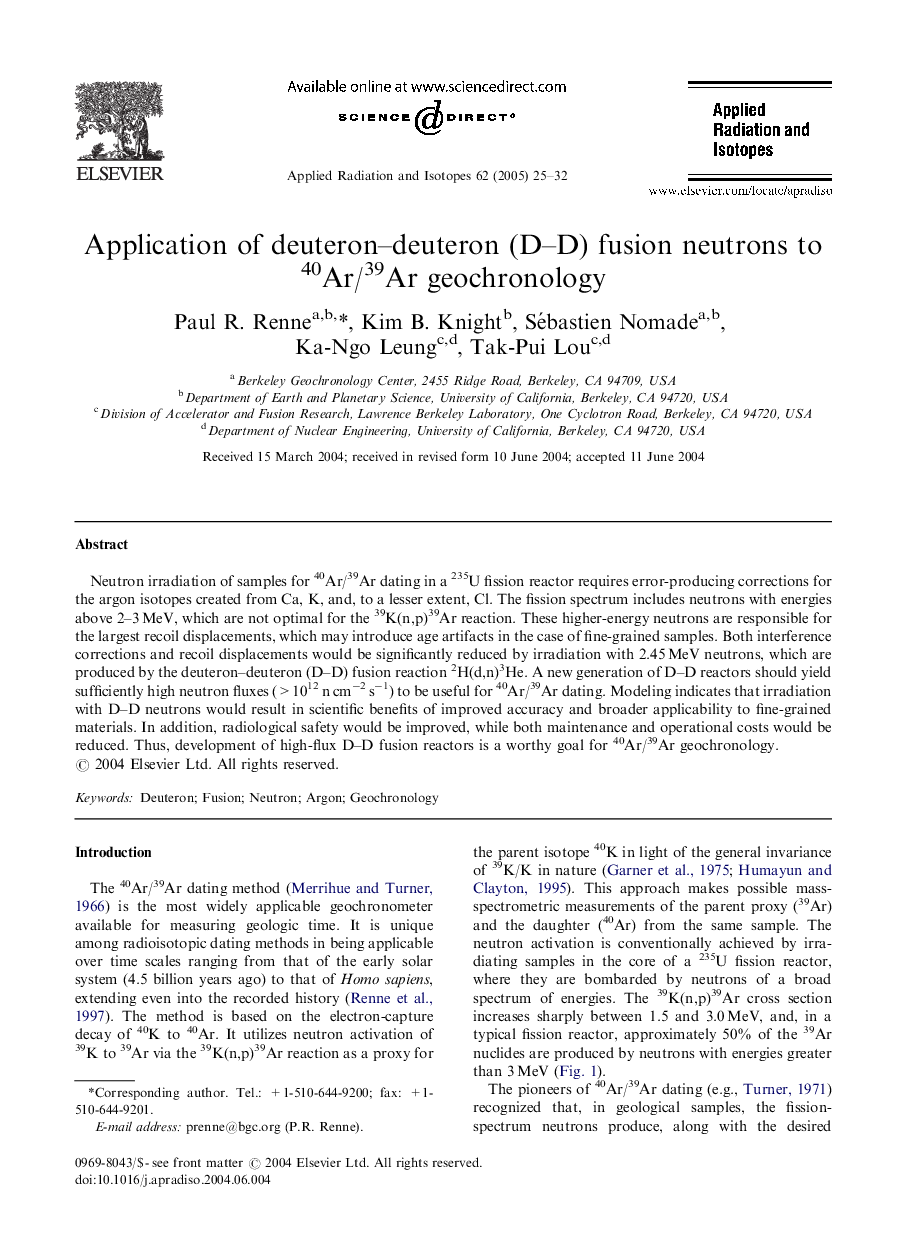| Article ID | Journal | Published Year | Pages | File Type |
|---|---|---|---|---|
| 10729849 | Applied Radiation and Isotopes | 2005 | 8 Pages |
Abstract
Neutron irradiation of samples for 40Ar/39Ar dating in a 235U fission reactor requires error-producing corrections for the argon isotopes created from Ca, K, and, to a lesser extent, Cl. The fission spectrum includes neutrons with energies above 2-3 MeV, which are not optimal for the 39K(n,p)39Ar reaction. These higher-energy neutrons are responsible for the largest recoil displacements, which may introduce age artifacts in the case of fine-grained samples. Both interference corrections and recoil displacements would be significantly reduced by irradiation with 2.45 MeV neutrons, which are produced by the deuteron-deuteron (D-D) fusion reaction 2H(d,n)3He. A new generation of D-D reactors should yield sufficiently high neutron fluxes (>1012 n cmâ2 sâ1) to be useful for 40Ar/39Ar dating. Modeling indicates that irradiation with D-D neutrons would result in scientific benefits of improved accuracy and broader applicability to fine-grained materials. In addition, radiological safety would be improved, while both maintenance and operational costs would be reduced. Thus, development of high-flux D-D fusion reactors is a worthy goal for 40Ar/39Ar geochronology.
Related Topics
Physical Sciences and Engineering
Physics and Astronomy
Radiation
Authors
Paul R. Renne, Kim B. Knight, Sébastien Nomade, Ka-Ngo Leung, Tak-Pui Lou,
